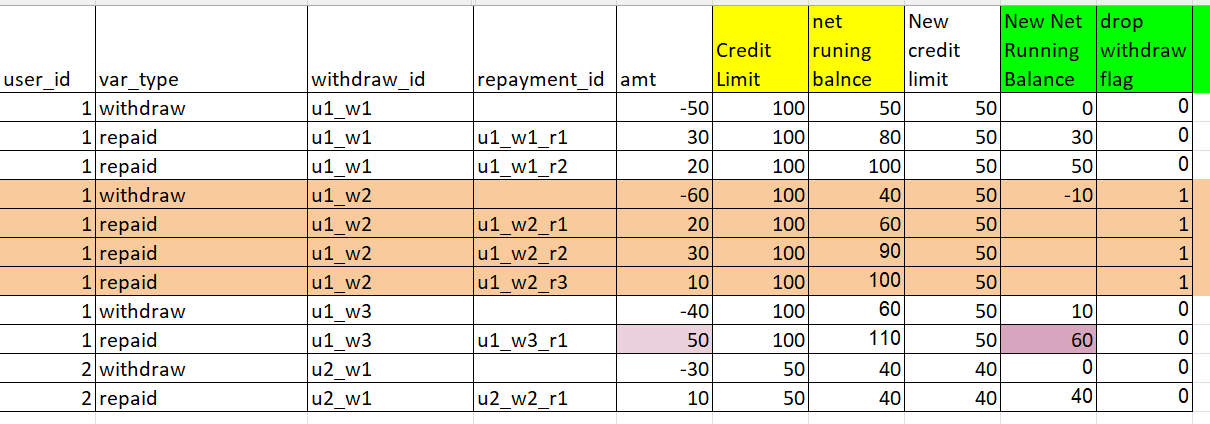I am working on credit line assimilation data.
df_01 <- data.frame(
user_id = c(1,1,1,1,1,1,1,1,1,2,2),
var_type = c("withdraw","repaid","repaid","withdraw","repaid","repaid","repaid","withdraw","repaid","withdraw","repaid"),
withdraw_id = c("u1_w1","u1_w1","u1_w1","u1_w2","u1_w2","u1_w2","u1_w2","u1_w3","u1_w3","u2_w1","u2_w1"),
repaid_id = c("","u1_w1_r1","u1_w1_r2","","u1_w2_r1","u1_w2_r2","u1_w2_r3","","u1_w3_r1","","u2_w2_r1"),
amt = c(-50,30,20,-60,20,30,10,-40,50,-30,10),
credit_limit = c(100,100,100,100,100,100,100,100,100,50,50),
running_balance = c(50,80,100,40,60,90,100,60,110,40,40),
new_credit_limit = c(50,50,50,50,50,50,50,50,50,40,40),
new_running_balance = c(0,30,50,-10,NA,NA,NA,10,60,0,40),
drop_obs_flag = c(0,0,0,1,1,1,1,0,0,0,0)
)
here
- var_type: has two types i.e withdraw, repaid
- repaid id is associated with withdraw_id
we are trying to see, if we allotted different credit line to users, how will it affect our business
Objective: as per new credit line, if withdraw amount is greater than pevious running balance for a user_id, we have to drop all rows associated with that withdraw_id. i.e last columns
- remarks_1: if the earlier withdraw obs is dropped, then we have to check the next withdraw id (it's in loop) for that user_id,
- remarks_2: last 2 columns, new_running_balance and drop_obs_flag is output variable
Kindly guide me how to approach it. thanks
